
The United States Army Special Forces (SF), colloquially known as the "Green Berets" due to their distinctive service headgear, is the special operations branch of the United States Army.
United States special operations forces (SOF) are the active and reserve component forces of the United States Army, Marine Corps, Navy and Air Force within the US military, as designated by the Secretary of Defense and specifically organized, trained, and equipped to conduct and support special operations. All active and reserve special operations forces are assigned to the United States Special Operations Command (USSOCOM).

The United States Army Special Operations Command (Airborne) (USASOC ( YOO-sə-sok)) is the command charged with overseeing the various special operations forces of the United States Army. Headquartered at Fort Liberty, North Carolina, it is the largest component of the United States Special Operations Command. It is an Army Service Component Command. Its mission is to organize, train, educate, man, equip, fund, administer, mobilize, deploy and sustain Army special operations forces to successfully conduct worldwide special operations.
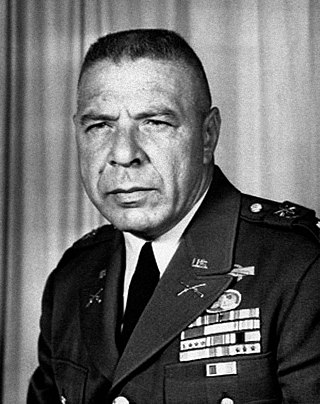
Arthur D. "Bull" Simons was a United States Army Special Forces colonel best known for leading the Sơn Tây raid, an attempted rescue of U.S. prisoners of war during the Vietnam War from a North Vietnamese prison at Sơn Tây. He also led the successful 1979 rescue of two employees of Electronic Data Systems from prison in Iran.

Fort Gulick was a United States Army base in the former Panama Canal Zone located on the Atlantic side of the Panama Canal near Fort Davis, on Gatun Lake.

The 10th Special Forces Group (Airborne) (10th SFG (A), or 10th Group) is an active duty United States Army Special Forces (SF) Group. 10th Group is designed to deploy and execute nine doctrinal missions: unconventional warfare (UW), foreign internal defense (FID), direct action (DA), counterinsurgency, special reconnaissance, counterterrorism, information operations, counter-proliferation of weapon of mass destruction, and security force assistance. 10th Group is responsible for operations within the EUCOM area of responsibility, as part of Special Operations Command Europe (SOCEUR).
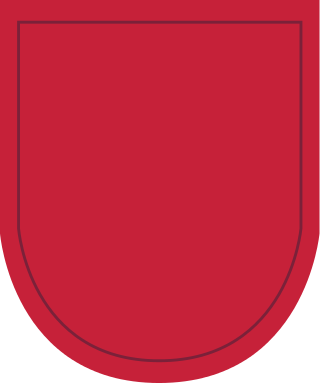
The 7th Special Forces Group (Airborne) (7th SFG) (A) is an operational unit of the United States Army Special Forces activated on 20 May 1960. It was reorganized from the 77th Special Forces Group, which was also stationed at Fort Liberty, North Carolina. 7th Group—as it is sometimes called—is designed to deploy and execute nine doctrinal missions: unconventional warfare, foreign internal defense, direct action, counter-insurgency, special reconnaissance, counter-terrorism, information operations, counterproliferation of weapons of mass destruction, and security force assistance. The 7th SFG(A) spends much of its time conducting foreign internal defense, counter-drug, and training missions of friendly governments' armed forces in South, Central, and North America as well as the Caribbean. 7th SFG(A) participated in Operation Urgent Fury in Grenada in 1983, and in Operation Just Cause in Panama in 1989. The 7th SFG(A) has, like all the SFGs, been heavily deployed to Iraq and Afghanistan in the War on Terror. The 7th SFG has lost more SF soldiers in the Global War on Terrorism than any other SFG.
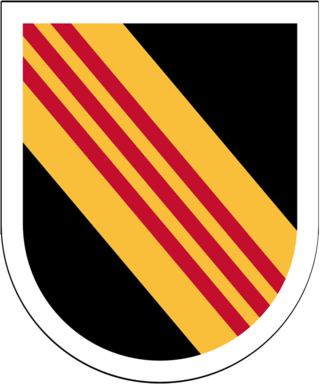
The 5th Special Forces Group (Airborne) (5th SFG (A), 5th Group) is one of the most decorated active duty United States Army Special Forces groups. The 5th SFG (A) saw extensive action in the Vietnam War and played a pivotal role in the early months of Operation Enduring Freedom. 5th Group is designed to deploy and execute nine doctrinal missions: unconventional warfare, foreign internal defense, direct action, counter-insurgency, special reconnaissance, counter-terrorism, information operations, counterproliferation of weapon of mass destruction, and security force assistance.

The 1st Special Forces Group (Airborne) (1st SFG) (A) is a unit of the U.S. Army Special Forces operating under the United States Pacific Command. It is designed to deploy and execute nine doctrinal missions throughout the Indo-Pacific Command area of operations: unconventional warfare, foreign internal defense, direct action, counter-insurgency, special reconnaissance, counter-terrorism, information operations, counterproliferation of weapon of mass destruction, and security force assistance.

The 193rd Infantry Brigade is a United States Army infantry brigade, which was originally constituted in the Army's organized reserves on 24 June 1922 as Headquarters and Headquarters Company, 193rd Infantry Brigade and assigned to the 97th Division. The brigade was converted and redesignated in February 1942 as the 97th Reconnaissance Troop, 97th Division. In February 1943, the Troop was ordered into active military service and organized at Camp Swift, Texas. It was reorganized and redesignated in October 1945 as the 97th Mechanized Cavalry Reconnaissance Troop.

The 3rd Special Forces Group (Airborne) – abbreviated 3rd SFG (A) and often simply called 3rd Group – is an active duty United States Army Special Forces (SF) group which was active in the Vietnam Era (1963–69), deactivated, and then reactivated in 1990. 3rd Group is designed to deploy and execute nine doctrinal missions: unconventional warfare, foreign internal defense, direct action, counter-insurgency, special reconnaissance, counter-terrorism, information operations, counterproliferation of weapon of mass destruction, and security force assistance. The 3rd SFG (A) was primarily responsible for operations within the AFRICOM area of responsibility, as part of the Special Operations Command, Africa (SOCAFRICA). Its primary area of operations (AO) is now Africa as part of a 2015 SOCOM directive but 3rd Group has also been involved in the Caribbean and the Greater Middle East. The 3rd SFG (A) has seen extensive action in the War on Terror and its members have distinguished themselves on the battlefield in Afghanistan.
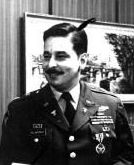
Raúl G. Villaronga was a United States Army officer who was the first Puerto Rican mayor of a Texas city. He served as mayor of Killeen, Texas, for three consecutive terms, from 1992 to 1998.

The 20th Special Forces Group (Airborne) (20th SFG) (A) is one of two Army National Guard groups for the United States Army Special Forces. 20th Group—as it is sometimes called—is designed to deploy and execute nine doctrinal missions: unconventional warfare, foreign internal defense, direct action, counter-insurgency, special reconnaissance, counter-terrorism, information operations, counterproliferation of weapon of mass destruction, and security force assistance.
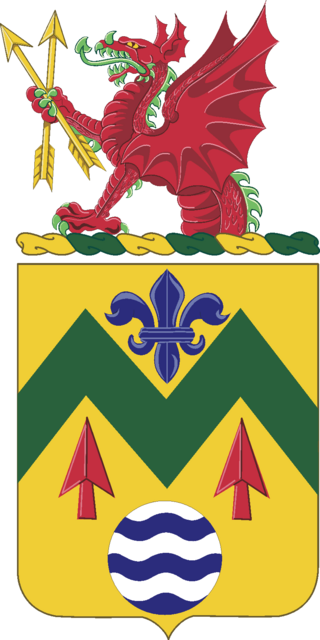
The 528th Support Battalion is a battalion of the United States Army. The 528th Support Battalion's mission is to provide rapidly deployable CSS and HSS to ARSOF as directed. The 528th Support Battalion's strengths lie in its capability to support ARSOF-unique and low-density weapons and vehicles. The 528th complements [organic] 22 ARSOF CSS, HSS, and signal units. The support battalion consists of a headquarters and main support company (HMSC), three forward support companies and may receive augmentation from Theater Army. As part of Army Special Operations Command the unit, along with the 112th Signal Battalion, is tasked to provide full logistical support to Army Special Operations Forces forming along with several other units what was known as Special Operations Support Command, later reorganized as the 528th Sustainment Brigade. Brigade Troops Battalion includes a wide variety of military occupation specialists: riggers, drivers, medics, mechanics, engineers, fuelers, cooks, etc.

The 19th Special Forces Group (Airborne) (19th SFG) (A) is one of two National Guard groups of the United States Army Special Forces. 19th Group—as it is sometimes called—is designed to deploy and execute nine doctrinal missions: unconventional warfare, foreign internal defense, direct action, counter-insurgency, special reconnaissance, counter-terrorism, information operations, counterproliferation of weapon of mass destruction, and security force assistance. Headquartered in Bluffdale, Utah, with detachments in Washington, West Virginia, Ohio, Rhode Island, Colorado, California and Texas, the 19th SFG(A) shares responsibility over Southwest Asia with the 5th Special Forces Group (Airborne), and the Pacific with the 1st Special Forces Group (Airborne). Company A, 2nd Battalion is one of several National Guard units with colonial roots.
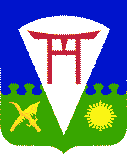
The 511th Parachute Infantry Regiment was an airborne infantry regiment of the United States Army, first activated during World War II under Colonel Orin D. "Hard Rock" Haugen. It formed the parachute infantry element of the 11th Airborne Division. The full history of the regiment is the subject of the book, When Angels Fall: From Toccoa to Tokyo, the 511th Parachute Infantry Regiment in World War II (2019) by author and historian Jeremy C. Holm whose grandfather served in the regiment's Company D during the war.

The U.S. Army Special Forces traces its roots as the Army's premier proponent of unconventional warfare from purpose-formed special operations units like the Alamo Scouts, Philippine guerrillas, First Special Service Force, and the Operational Groups (OGs) of the Office of Strategic Services. Although the OSS was not an Army organization, many Army personnel were assigned to the OSS and later used their experiences to influence the forming of Special Forces.
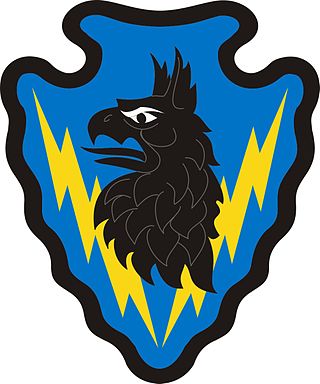
The 71st Expeditionary Military Intelligence Brigade (EMIB) is a unit of the Texas Army National Guard.

The United States Army Special Operations Aviation Command (USASOAC) provides command and control, executive oversight, and resourcing of U.S. Army Special Operations Command (USASOC) aviation assets and units in support of national security objectives. USASOAC is responsible for service and component interface; training, doctrine, and proponency for Army Special Operations Aviation (SOA); system integration and fleet modernization; aviation resource management; material readiness; program management; and ASCC oversight. USASOAC was established 25 March 2011 consisting of 135 headquarters soldiers and subordinate units totaling more than 3,300 personnel, include the 160th Special Operations Aviation Regiment (Airborne), (160th SOAR (A)) which features 4 Aviation Battalions, the USASOC Flight Company, the Special Operations Aviation Training Battalion, the Systems Integration Management Office, and the Technology Application Projects Office. The first commander of USASOAC was Brig Gen. Kevin Mangum.





















